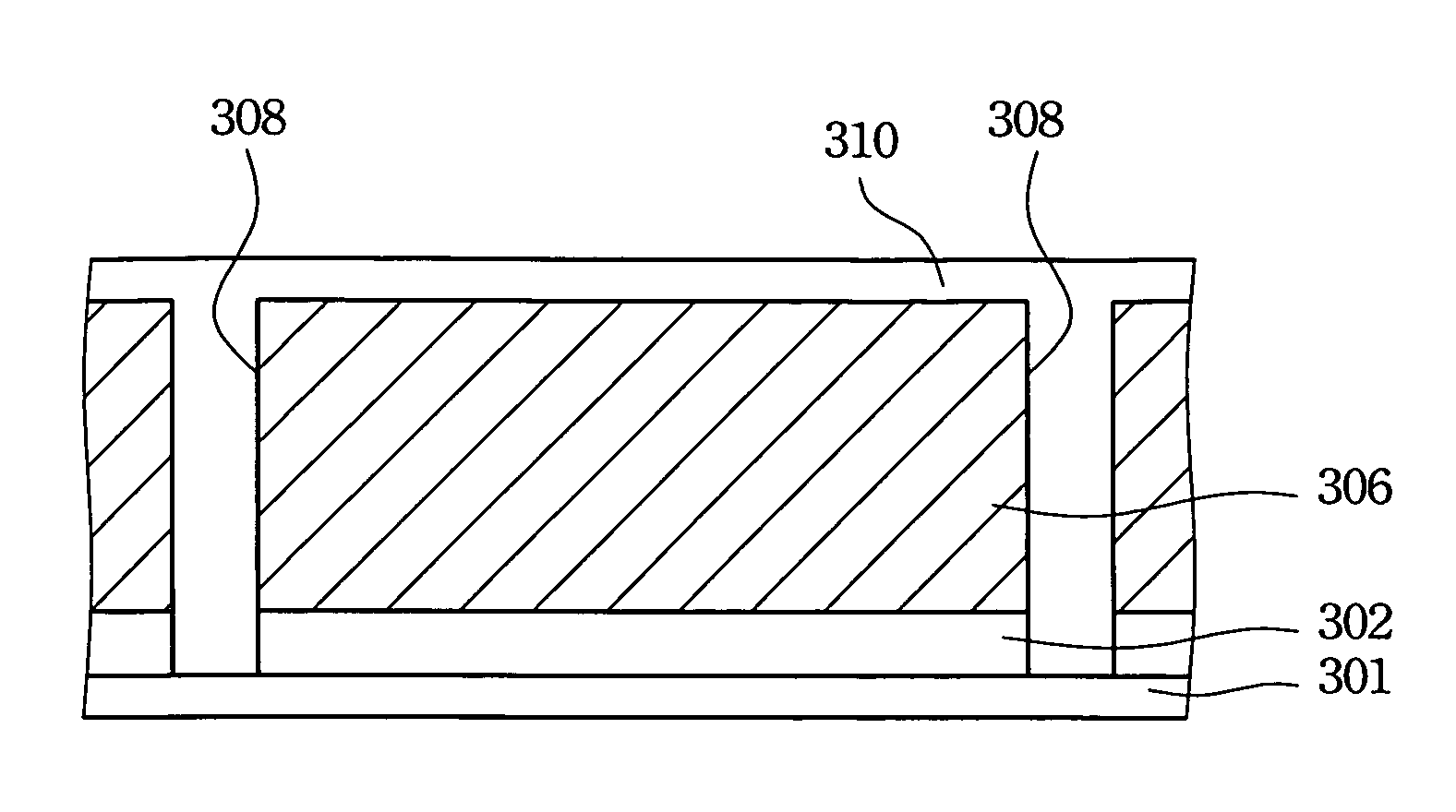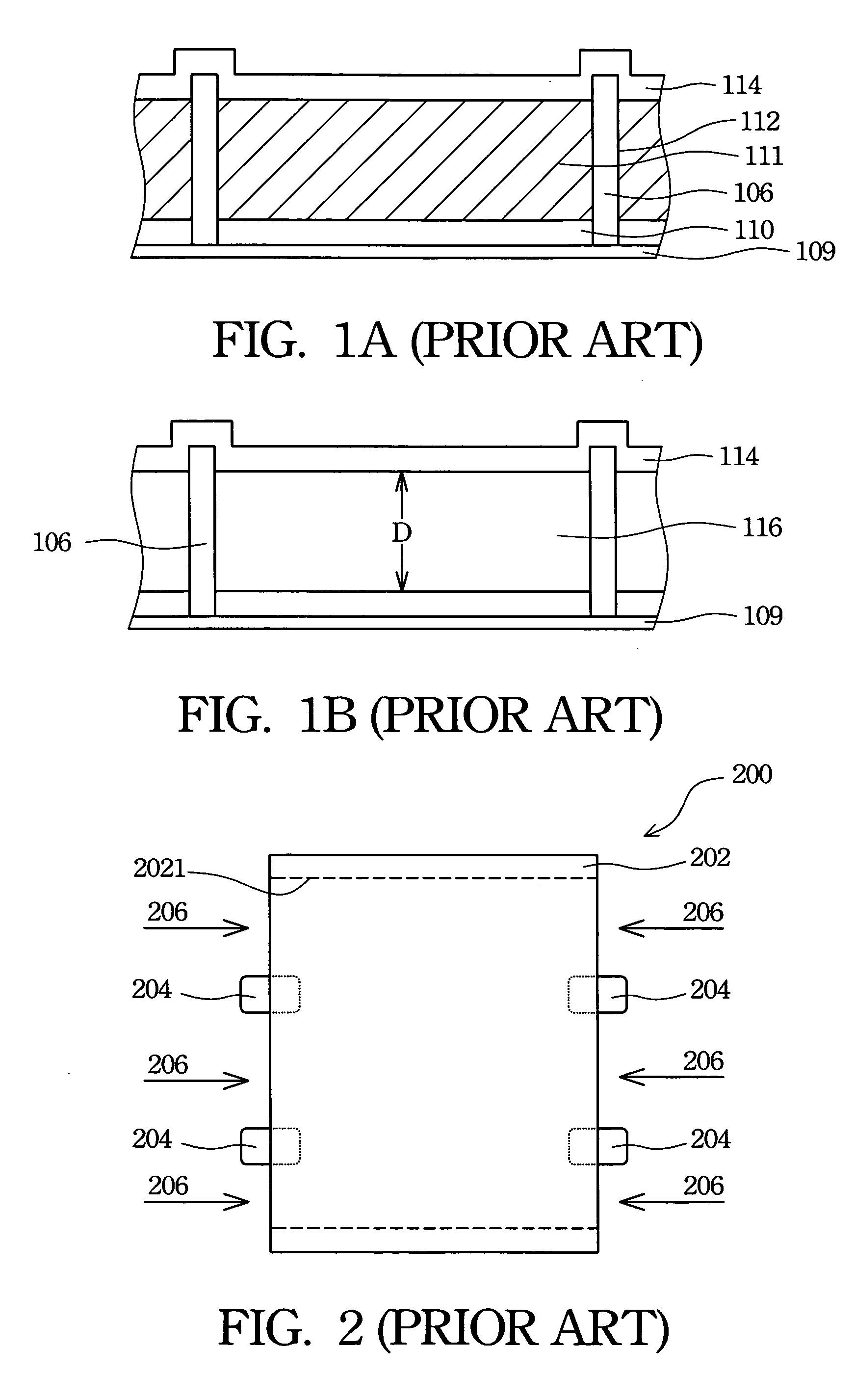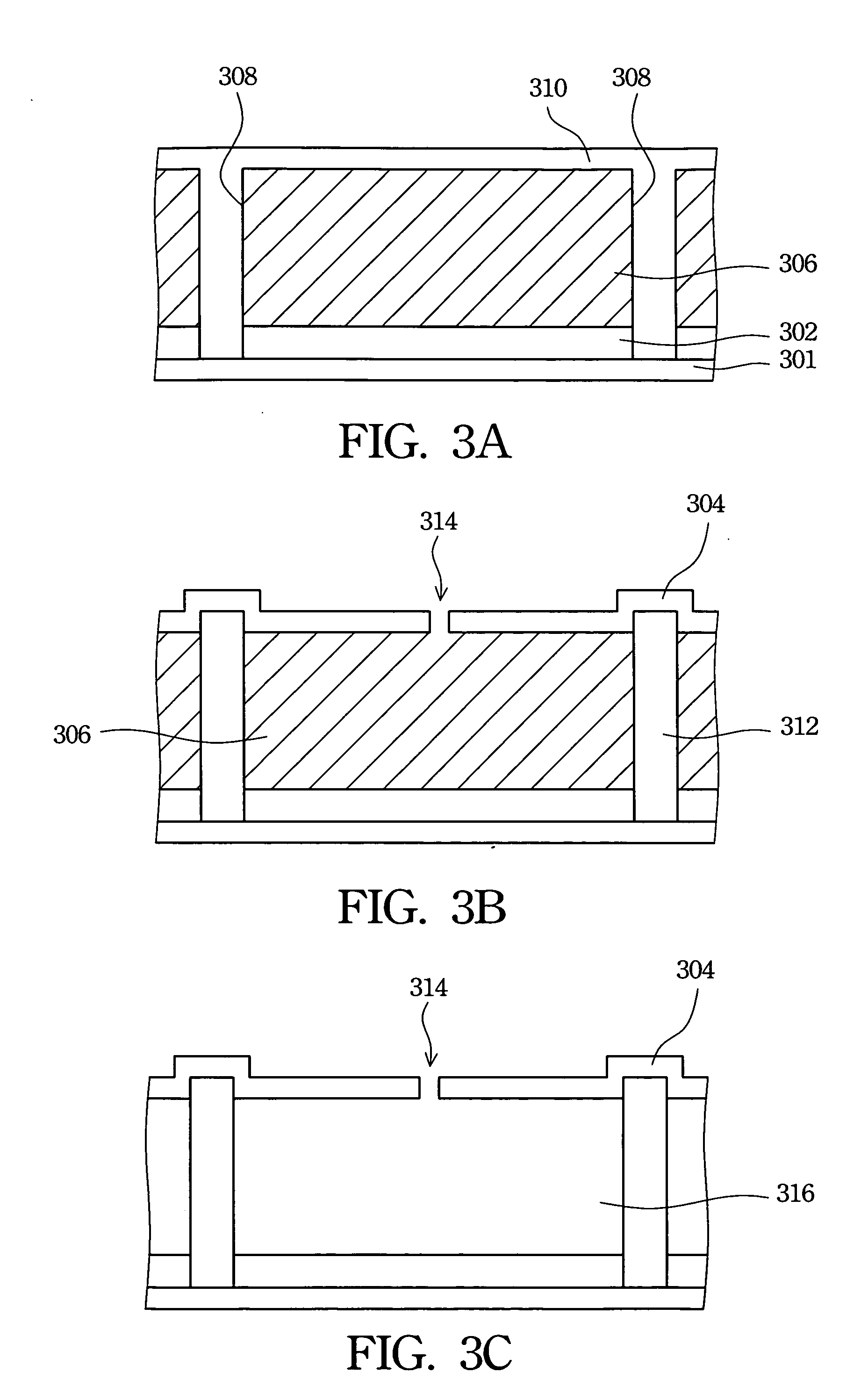Method for fabricating optical interference display cell
a technology of optical interference and display cell, which is applied in the manufacture of cable/conductor, microstructural device, crystal growth process, etc., can solve the problems of poor lateral etching capacity high cost and instability of etching xenon difluoride, and disadvantageous so as to increase the life cycle of etching plasma, reduce the time needed, increase the throughput of optical interference display
- Summary
- Abstract
- Description
- Claims
- Application Information
AI Technical Summary
Benefits of technology
Problems solved by technology
Method used
Image
Examples
Embodiment Construction
[0025] In order to make the illustration of a method for manufacturing an optical interference display cell in the present invention more clear, an embodiment of the present invention herein takes an optical interference display cell structure as an example to explain advantages of the present invention.
[0026]FIG. 3A to FIG. 3C illustrate a method for manufacturing an optical interference display cell structure in accordance with a preferred embodiment of the present invention. Referring to FIG. 3A, a first electrode 302 and a sacrificial layer 306 are formed on a transparent substrate 301 in sequence. The sacrificial layer 306 may be made of transparent material such as dielectric material, or opaque material such as metal material, polysilicon or amorphous silicon. In this embodiment, polysilicon is used as the material of the sacrificial layer 306. Openings 308 are formed in the first electrode 402 and the sacrificial layer 306 by a photolithography and etching process, and each...
PUM
| Property | Measurement | Unit |
|---|---|---|
| temperature | aaaaa | aaaaa |
| temperature | aaaaa | aaaaa |
| temperature | aaaaa | aaaaa |
Abstract
Description
Claims
Application Information
 Login to View More
Login to View More - R&D
- Intellectual Property
- Life Sciences
- Materials
- Tech Scout
- Unparalleled Data Quality
- Higher Quality Content
- 60% Fewer Hallucinations
Browse by: Latest US Patents, China's latest patents, Technical Efficacy Thesaurus, Application Domain, Technology Topic, Popular Technical Reports.
© 2025 PatSnap. All rights reserved.Legal|Privacy policy|Modern Slavery Act Transparency Statement|Sitemap|About US| Contact US: help@patsnap.com



